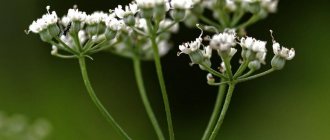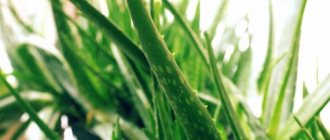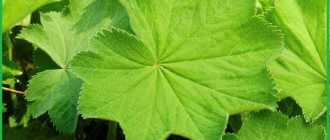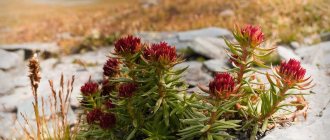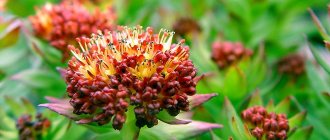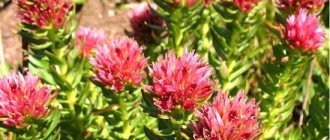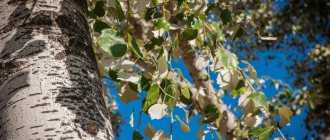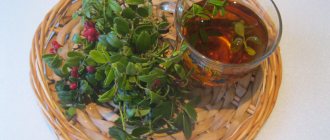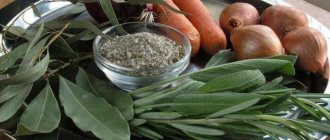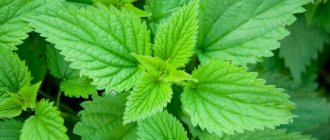Blue cyanosis is an ornamental herbaceous plant that belongs to the cyanosis genus (Polemonium) of the cyanosis family (Polemoniaceae).
The medicinal properties of blue cyanosis are recognized by official medicine as an effective remedy for the treatment of bronchopulmonary diseases, including tuberculosis, stomach and duodenal ulcers. The plant has pronounced sedative (calming) properties and is 8-10 times more effective than valerian.
Blue cyanosis is a plant, a summer honey plant, one of the main taiga honey plants in Siberia. Due to its exceptional decorative properties and delicate aroma, it is grown in flower beds and front gardens.
Blue cyanosis. Kinds. Photo
The genus cyanosis, in addition to blue cyanosis, includes about 40 species, including:
- northern blueweed – Polemonium boreale Adams;
- large-flowered blueberry – Polemonium macranthum Klokov;
- hairy cyanosis – Polemonium pilosum () GNJones;
- beautiful cyanosis – Polemonium pulchellum Bunge;
- cystic cyanosis – Polemonium racemosum, etc.
Some of them, for example, creeping cyanosis (Polemonium reptans L.), are used for medicinal purposes.
Blue cyanosis. Subspecies
Blue cyanosis has two varieties:
- Polemonium caeruleum var. Acutiflorum (ex Roem. & Schult.) Ledeb.;
- Polemonium caeruleum var. Caeruleum.
Blue cyanosis in Latin : Polemónium caerúleum L.
Other names: azure cyanosis (azure), Greek valerian, overcome-grass, bran-grass, blue St. John's wort, dvusil, harmful grass, mother plant.
Blue cyanosis. Botanical description
Blueberry is a herbaceous perennial. Height: 40-100, up to 150 cm. The rhizome is short, thick, creeping, located horizontally. Length: 5 cm, width: 3 cm. The roots are numerous, fibrous. The taste is initially bitter, then sweetish, mucous.
In the first year, basal leaves grow. In subsequent ones - stems. Young plants have one stem, older plants have several. The stem is vertical, hollow, unclearly ribbed, and may weakly branch in the upper part.
The basal leaves of blue cyanosis are arranged in a rosette. Stem plants are alternate, imparipinnate, smooth, the lower ones have petioles, the upper ones are sessile. They consist of 17-21 oblong-ovate pointed leaves.
The flowers are broadly bell-shaped, five-lobed, collected in an apical elongated paniculate inflorescence. Color: bright blue, light blue, dark purple, white. Diameter: about 2 cm.
The fruit is a round, three-locular, multi-seeded capsule. Easily cracks. The seeds are small, angular. Color: dark brown, black. Length: 3 mm. Weight of 1000 seeds: about 1.5 g.
It blooms from the second year in June-July. The seeds ripen in August-September. Propagated by seeds, division of rhizomes.
Procurement of raw materials
The most valuable substances are found in the roots of young plants. They start collecting them in August-September. The roots are located close to the surface of the earth, so they can be easily removed by hand. Having rid the future raw material of lumps of soil, it is separated from the stem, washed and placed in a dark, well-ventilated place.
If you leave the plant in direct sunlight, it will lose its medicinal properties. During drying, the plant is periodically turned over to achieve a uniform effect. If you don't have the time or space to dry it outside, use a dryer or oven.
First, cut the rhizome into small cubes up to 2 cm long or into thin strips, place it in a drying machine at a temperature of no more than 50C. To find out if the raw material is ready, try to mash it. Roots ready for storage will be brittle.
Blue cyanosis. Habitat
Blue cyanosis has become widespread in Western Europe and the Scandinavian Peninsula, as well as in the European part of the CIS, the Caucasus, Western and southwestern Eastern Siberia.
Where does blue cyanosis grow? The plant prefers fertile soils. It can be found in forest clearings and edges, along the banks of reservoirs, in wet meadows, forested mountain slopes and among bushes. Grows singly or in small groups.
Grown on an industrial scale. As an ornamental plant, blue cyanosis is used in landscape design; it looks especially good in groups near bushes.
Blue cyanosis. Collection and preparation
For medicinal purposes, rhizomes with blue cyanosis roots are harvested, and less commonly, grass (stems, leaves, flowers), which has less pronounced medicinal properties.
Harvesting blue cyanosis (grass) is done in June-July, roots - in the fall, after the above-ground part dies. Be sure to leave at least 15-20% of mature plants to restore the thickets.
The remaining stems are cut off from the dug roots and quickly washed in running cold water. Then cut lengthwise into 2-4 pieces and dry in the open air (in the sun, if possible), spreading them out in a thin layer, not forgetting to turn them over periodically. The smell of the finished blue cyanosis raw material is weak and peculiar. Taste: bitter.
Dried raw materials are stored in boxes or bags made of natural material in a room with good air ventilation. Shelf life of blue cyanosis: 2 years.
Planting cyanosis blue
To successfully grow the crop, the cyanosis needs to be provided with constant humidity. The plant grows well in low-lying areas with high groundwater levels. The plant is demanding on soil acidity. Growing cyanosis in open ground in areas with acidic soils and high salinity is impossible.
The plant needs constant soil moisture
The plant does not tolerate drought: even short-term drying of the soil causes loss of decorativeness, disease or death of the plant. During the hot summer months, cyanosis requires systematic, abundant watering. With regular watering, the flowering of the plant in open ground lasts a little longer.
Planting cyanosis is possible in sunny places or in partial shade. When planting a plant, you should prepare the beds by adding fertile soil with humus. The soil for the crop requires fertile but light soil.
Blue cyanosis. Chemical composition
The beneficial and medicinal properties of blue cyanosis are determined by the components in its composition. Triterpene saponins (20-30%), organic acids, essential and fatty oils, starch, D-galactose, L-arabinose, and resinous substances (1.28%) were found in the roots.
In addition, the roots of blue cyanosis contain macro- and microelements: potassium (21.2 mg/g), calcium (12.2 mg/g), magnesium (3.6 mg/g), iron (3.52 mg/g) , as well as zinc (0.73 µg/g), molybdenum (0.6 µg/g), chromium (0.67 µg/g), aluminum (1.12 µg/g), barium (2.3 µg/g) d), selenium (5.5 µg/g), cadmium (4 µg/g), silver (96 µg/g), boron (70.4 µg/g), etc.
Blue cyanosis. Use in folk medicine
A large number of people, freely using plants to treat various diseases, believe that they are absolutely harmless. However, among medicinal plants there are potent, toxic and even poisonous ones. In addition, many people, especially older people, have several chronic diseases.
Therefore, in order for the treatment to be effective, when using it, one should take into account the beneficial and medicinal properties of blue cyanosis and the contraindications that it has, and this can only be done by a doctor. Based on this, before you start taking blue cyanosis medications, consult a doctor, or better yet, a herbalist you trust. The information given below is for informational purposes only.
Vascular diseases
The use of blue cyanosis (grass, roots) gives a good effect for atherosclerosis. The substances in its composition help reduce cholesterol in the blood, normalize fat and cholesterol metabolism in the body, and inhibit the development of the disease.
For the brain
Traditional medicine uses the plant for certain brain diseases, for example, headaches. Also, a good effect was obtained from the use of blue cyanosis for epilepsy.
Colds and bronchopulmonary diseases
The plant has pronounced expectorant properties, so blue cyanosis has proven itself to be a good treatment for respiratory diseases, such as acute respiratory diseases, febrile conditions, bronchitis, including chronic bronchitis, bronchiectation, pneumonia, tuberculosis, whooping cough, etc.
Gastrointestinal diseases
Treatment with blue cyanosis preparations is recommended for gastritis, stomach and duodenal ulcers. It also helps with dysentery.
Nervous system diseases
In both official and traditional medicine, blue cyanosis medications are recommended for mental and nervous diseases, to restore the nervous system. In its effects, the plant is several times superior to valerian, widely known for its calming properties. Blue cyanosis has a good effect on insomnia and reduces the manifestations of nervous tics.
In folk medicine, plant preparations are used to treat rabies.
For women
The benefits of blue cyanosis for women's health have found application. An infusion of leaves (flowers) is used for douching for leucorrhoea. It is also used for rinsing hair after hygienic washing for baldness.
Skin diseases
Blue cyanosis (herb, root) has proven itself well for the treatment of a number of skin diseases, such as eczema, psoriasis, neurodermatitis, pruritic dermatosis, collagenosis, vitiligo, lichen planus.
Wounds, cuts
In folk medicine, blue cyanosis is used as a poultice for snake bites.
Metabolism
The use of blue cyanosis to normalize metabolism gives a complex effect. A decoction of the roots stimulates the function of the adrenal glands, regulates fat, cholesterol, and lipid metabolism.
Blue cyanosis preparations are prescribed for diseases associated with lipid metabolism disorders.
Benefits of the plant
The most valuable part of the cyanosis is the root. This is where starch, resin, organic acids, galactose, saponins, and various macro- and microelements are contained. For many centuries it has been used as a powerful remedy against various ailments.
So what properties does this plant have:
- Conquers diseases of the cardiovascular system. Cyanosis improves blood flow, prevents the development of stroke and heart attack. With it, irregular heartbeat, cardiosclerosis and angina pectoris are also not scary.
- Fights respiratory diseases. The plant prevents the development of pneumonia, bronchitis, tuberculosis and whooping cough. By getting rid of phlegm, it eliminates even the most severe cough.
- Normalizes the functioning of the nervous system. The root is used as a sedative. It relieves attacks of hysteria and anxiety, improves sleep and fights insomnia. To achieve quick results, use the plant in combination with motherwort and hawthorn.
- Improves the functioning of the urinary excretory system. By removing inflammation and swelling of organs, the herb prevents excessive accumulation of fluid and helps its rapid elimination.
- Fights endocrine disorders. Preparations based on cyanosis normalize blood sugar, which is important for a diabetic. They are used to improve metabolism and remove cholesterol from the body.
- Prevents diseases of the digestive system. The plant suppresses symptoms of gastrointestinal ulcers. It reduces inflammation and cleanses the blood.
- Copes with skin diseases. The root eliminates irritation and inflammation due to dermatitis. It also helps relieve symptoms of insect bites.
- It will cure diseases of the reproductive system. By eliminating genital dysfunction, nervous tension, spasms and stress, the plant will improve the functioning of the genital organs not only of women, but also of men.
Blue cyanosis. Dosage forms
Blue cyanosis decoction
2 tbsp. pour 250 ml of roots. water, bring to a boil and simmer over low heat for 15 minutes. Remove from heat, cover with a lid, insulate and leave for 45 minutes. Strain, squeeze out the raw materials. Using boiled water, bring the resulting broth to its original volume. Store in a cool place, such as a refrigerator, for no more than 2 days.
Take 1 tbsp. 3-5 times a day two hours after meals.
Blue cyanosis extract
To prepare the extract, use a decoction, which is poured into a container, brought to a boil and simmered over low heat until the volume of the liquid is reduced by half.
Take 1 tsp. 3 times a day before meals.
Blue cyanosis tincture
Fill a glass jar (preferably dark glass) halfway with blue cyanosis roots and fill to the top with high-quality vodka. Close the container tightly with a lid and leave in a dark place at room temperature for a month, remembering to stir periodically. Strain, squeeze out the raw materials.
Take 20 drops in water 2-3 times a day after meals.
Reproduction of blue cyanosis
To propagate blue cyanosis, you should use seeds freshly collected in the fall. The fact is that long-term storage of cyanosis seeds significantly reduces their germination.
Considering that the plant tolerates cold winters well, winter sowing of seeds in furrows up to 3 cm deep is practiced. Rotted manure, complex mineral fertilizer and granulated double superphosphate are added to the soil for sowing. Previously, the beds for sowing cyanosis are dug up to 40 cm.
Advice. It is allowed to sow cyanosis in open ground in early spring. But when sown in winter, the plants begin to bloom several weeks earlier.
Sprout of cyanosis
Blue cyanosis. Contraindications
In order for the treatment to be effective, it is imperative to take into account the benefits of blue cyanosis and the harm that it can cause if used incorrectly. The plant should be used with caution when:
- increased blood clotting or a tendency to this disease,
- hypertensive crisis.
Although the plant is low-toxic and when used in recommended doses, blue cyanosis does not cause side effects, however, when taking large doses, vomiting, diarrhea, headache, and shortness of breath may occur. In such cases, heart medications should be taken. In more severe cases, gastric lavage is performed
Sources:
D.S. Ivashin, Z.F. Katina. Medicinal plants of Ukraine.
Rim Akhmedov. Plants are your friends and foes.
I.N. Putyrsky, V. Prokhorov. Universal encyclopedia of medicinal plants.
A.P. Popov. Medicinal plants in folk medicine.
S.Ya. Sokolov, I.P. Zamotaev. Handbook of medicinal plants.
Advice from the traditional healer Evdokia. Herbalist, illustrated reference book.
Contraindications for use
Despite the large list of medicinal properties, the plant has a considerable number of side effects. Therefore, please read it before using it.
Decoctions and infusions based on cyanosis are contraindicated:
- children under one year old
- pregnant women
- nursing women
- People with high blood pressure and high blood clotting should be careful.
If you are not one of the above, you should still be careful when taking this medicine. Because overdosing it or taking it on an empty stomach can lead to serious consequences.
